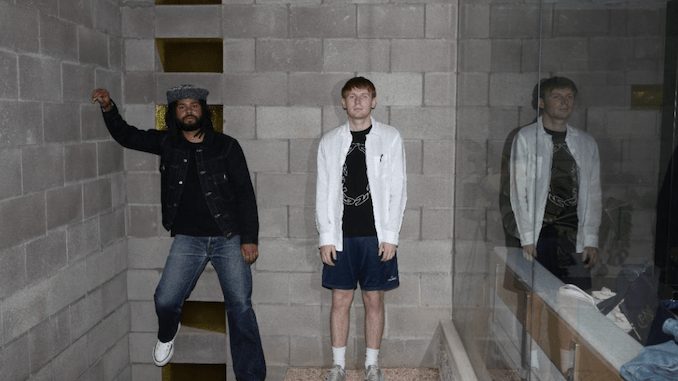Little Richard once told me that he single-handedly created rock ’n’roll. I didn’t believe him, and neither should you. After all, when he recorded his first national hit, 1955’s “Tutti Frutti,” he borrowed the band of Fats Domino, who had been a rock ’n’ roll star for five years already.
But Little Richard, who died Saturday of bone cancer at age 87, gave the nascent genre something that Domino, Ike Turner, Bill Haley or other nominees as rock ’n’ roll’s inventor couldn’t: a jolt of adrenaline so powerful that the music was never the same.
It was all there on that breakthrough single. You put your nickel in the jukebox, listened to the disc slide into position, heard the hiss as the needle touched down and then leaned backward as the wildest wail you’d ever heard erupted from the speaker: “A wop bop a loo mop a lop bam bum.”
It was as if the 22-year-old Richard Penniman were speaking in tongues like someone overcome by the spirit in an African-American holy-roller church, like someone climaxing in a long-hoped-for orgasm, like a poor, skinny, bisexual, black man throwing off three centuries of racial, class and gender categories in a howl of freedom that transcended language to infect a whole generation more effectively than any coronavirus.
After that opening cry, the house band at Cosimo Matassa’s J&M Studio in New Orleans jumped in with slap-happy drums, rapid piano arpeggios and horns. In his nightclub act, Penniman had long sung it as “Tutti frutti, good booty,” but now it had been cleaned up for Top-40 radio as “Tutti Frutti, oh, rootie.”
The emphasis on good booty was still unmistakable when he now sang, “I got a gal named Sue; she knows just what to do. She rocks to the east; she rocks to the west.” Far from flagging, the frantic pace never faltered; indeed it kept building until it was topped off by a tenor sax solo by the great Lee Allen and a yodeling “ooh” from Penniman.
“We played `Tutti Frutti’ for several years before we recorded it,” Penniman told me in 1999. “It was risqué and then we cleaned it up. Musically it was identical. We were unsure about putting, `A wop bop a loo mop a lop bam bum’ on the record, because we had never heard anything do anything like that on a record before. It didn’t sound like anything that was on the market, and I was afraid it would sound too different.”
It was certainly different, but it wasn’t “too different.” It answered a need that millions of listeners didn’t even know they had, propelling the song to #2 on the R&B charts and to #21 on the pop charts. The follow-up single, cut at J&M, paired Penniman’s own “Long Tall Sally” was on side A with Leiber and Stoller’s “Kansas City” on side B side; both went top-40 on the pop chart. By now, the template was set: wailing, squealing lead vocals over a syncopated New Orleans groove.
“I put blues and boogie-woogie together and made rock ’n’ roll,” he told me. “I was just trying something, but I saw it was catching on. I’m glad it did. There’s no such thing as rock ’n’ roll really; it’s just rhythm & blues uptempo. I took Louis Jordan and put more bottom into it, more guitar and piano.
“I bought the uniforms from his band in the ’50s in Asheville, North Carolina, because I idolized him. He was so alive; he used so much expression just with his eyes. He was an energizer, a great entertainer, but he never got the credit he deserved. The way he acted on the stage; he taught me how to give to the people what they want.”
The hits kept coming. “Rip It Up,” “Lucille,” “Jenny, Jenny,” “Keep A-Knockin’” and “Good Golly Miss Molly” all hit the R&B top-five and the pop top-30. For years Bruce Springsteen included “Good Golly Miss Molly” and “Jenny, Jenny” in the so-called “Mitch Ryder Medley” during the encore of his live shows.
Little Richard’s own live shows were manic affairs. The singer would start off sitting at the piano bench, but before long he’d be standing as he played, then he’d grab the mic from the stand and start singing and dancing his way across the stage, his long, wavy conk flipping this way and that.
Then in 1957, while on a tour of Australia, the tension between his religious upbringing and his life of bawdy blues, bisexual affairs and various means of intoxication became too much. He started seeing signs in the sky and in the engines of his airplane. In the middle of an outdoor concert in Sydney, he suddenly quit.
“It really shook me,” he said in Charles White’s 1984 biography, The Life and Times of Little Richard. ”I got up from the piano and said, `This is it. I am through. I am leaving show business to go back to God.’ The very next day we were leaving Sydney on the ferry, and I had told the fellows in the band that I was quitting. Clifford didn’t believe me, so I said, ‘Would you believe it if I throw this ring in the water?’” With that he took off a big diamond ring and tossed it in Sydney Harbor.
He did one more concert in New York and one more session for Specialty Records, but then he enrolled in Alabama’s Oakwood College to study the Bible. It was perhaps the most dramatic example of the conflict between religious and secular music in America, a conflict that has troubled and inspired artists from Thomas Dorsey and Sam Cooke to Al Green. In 1962, Little Richard released a gospel album, King of the Gospel singers, produced by Quincy Jones with liner notes by Mahalia Jackson, his longtime idol.
“My beat came from the blues,” he told me, “but my singing came from Mahalia. I got a lot of the turns in my voice from her. When you hear my show in person and if you listen closely, you can hear some of her in me. My phrasing is different, because I’m singing rock’n’roll, but I use how she put a feeling in a song, how she would lose herself in a song.”
That same year he did a European tour with his earlier hits, adored not just by fans but also by the young musicians in the Beatles and Rolling Stones. He stuck with pop music till 1979, when he quit rock ’n’ roll again and returned to religion full-time.
In 1986, he returned to pop music as a legend invited to sing duets with U2, the Beach Boys, Living Colour, Elton John, Fishbone, Solomon Burke and Tanya Tucker. He even presided at the 1972 wedding of Little Steven Van Zandt. He often toured as a package show with Jerry Lee Lewis, Fats Domino and/or Chuck Berry. He was feted wherever he went, but he was never quite satisfied.
“They still haven’t given me my due as the architect of rock ’n’ roll,” he complained to me in 1999. “If you’re a white guy, they call you the so-and-so. If you’re a black guy, you a self-proclaimed so-and-so. The white guy is the King of Rock and Roll, but I’m the self-proclaimed King of Rock’n’Roll. It’s not right. Rock ’n’ roll is black music, so why don’t they just say so? If it’s from a cow, say it’s from a cow. Instead they wait until you’re dead and there’s dirt on your grave, and then they say how great you were, but you don’t get to hear it.”




